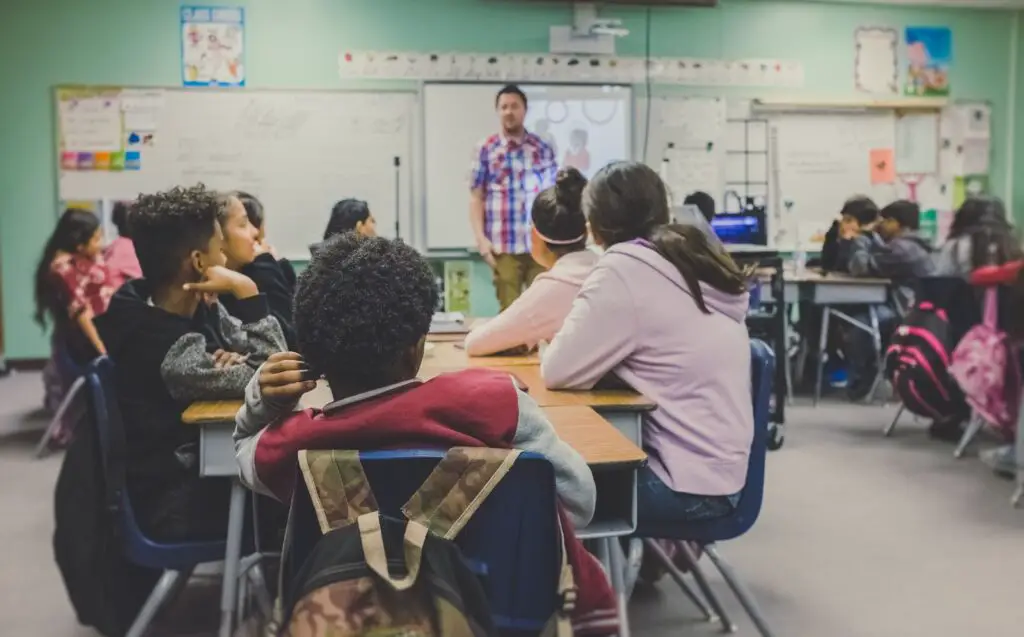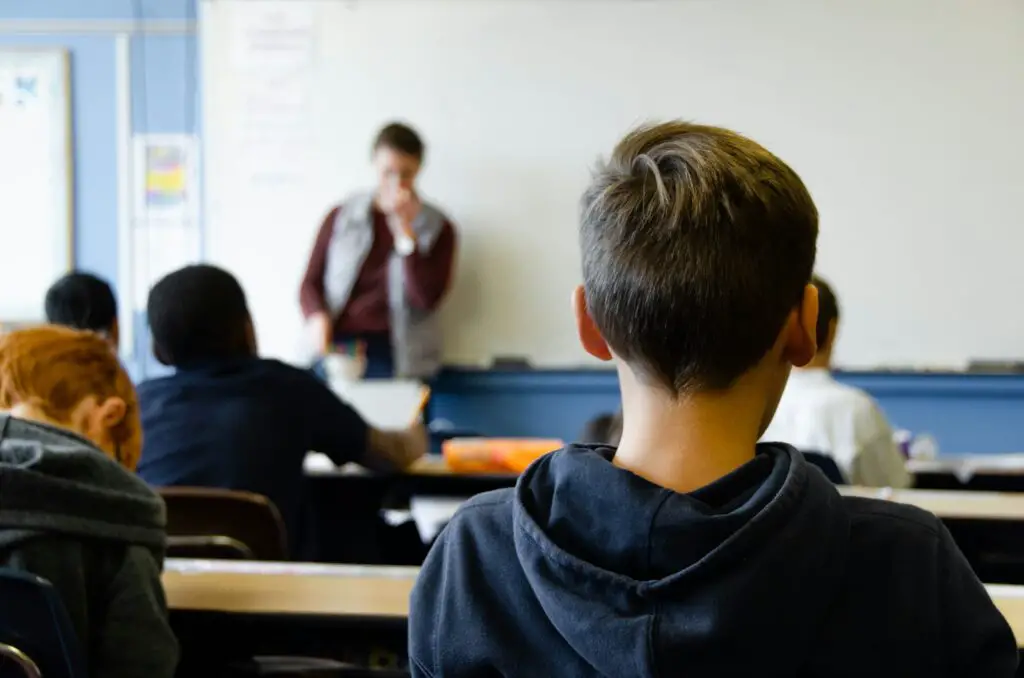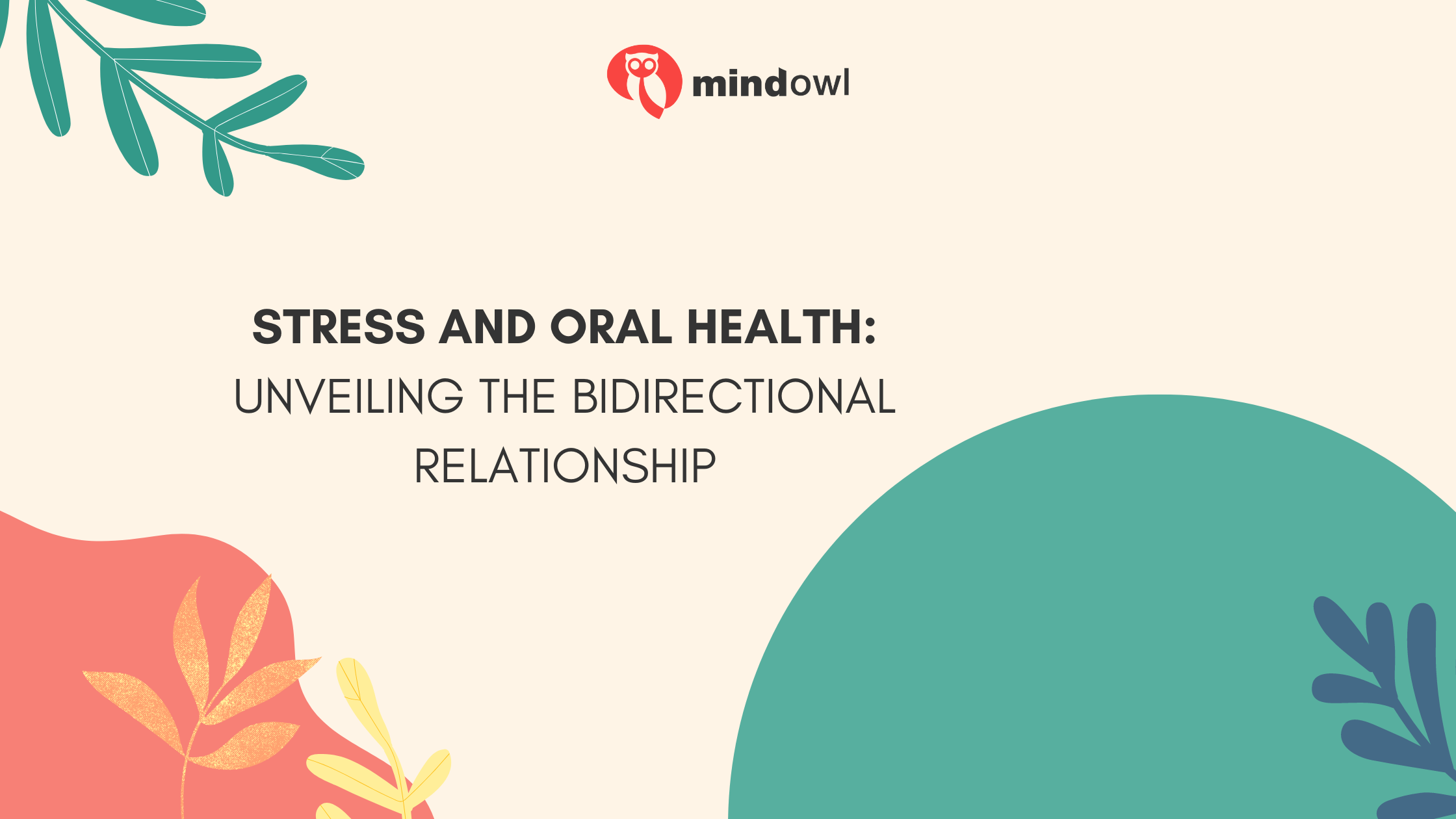With the persistent necessities of the classroom and the challenge of their work-personal life balance, finding stress management methods is becoming increasingly pertinent for educators.
Mindfulness for teachers presents itself as a calm alternative amid the turbulent challenges of teaching.
Studies indicate that the practice of mindfulness can appreciably alleviate stress levels among educators. This article will guide you on how mindfulness can positively influence your teaching experience and cultivate a more favourable learning environment for your students.
We’ll extend practical activities and advice on incorporating mindful practices into your everyday activities, simplifying the process of fostering tranquillity in the classroom.
Understanding Mindfulness in Education
Mindfulness in education involves teaching students to focus on the present moment with acceptance and compassion. It equips teachers with tools to help create a calm, focused classroom environment, improving both student well-being and academic performance.
Importance for Teachers
Teachers face a lot of stress daily. From high-stakes testing to managing severe psychological issues in pupils, the challenges are vast. Mindfulness can help teachers handle these pressures better.
It equips them with techniques to manage their emotions and stay aware in stressful situations. This practice leads to increased job satisfaction.
Mindfulness also helps teachers create a positive learning environment. They become more patient and empathetic, improving interactions with students. With regular mindfulness practice, teachers model healthy emotional regulation for their students.
This makes the classroom a calmer place where learning thrives.
Impact on Classroom Dynamics
Mindfulness in the classroom transforms the learning environment. A calm and focused atmosphere emerges, leading to fewer disruptions and conflicts. This change is based on systematic review findings from studies showing that teaching mindfulness not only promotes a peaceful space but also strengthens student-teacher relationships.
With better attention and reduced stress, both teachers and students engage more positively, enhancing overall dynamics.
Empirical evidence suggests that incorporating mindfulness into education benefits classroom interaction immensely. Students develop greater empathy towards each other while improving their focus and awareness—key components for academic success.
Mindfulness practices, like daily moments of silence or breathing exercises, directly contribute to this positive shift by lowering negative emotions such as anxiety and anger among pupils.
Mindfulness fosters an environment where patience, understanding, and compassion are at the forefront of teacher-student interactions.

Core Benefits of Mindfulness for Teachers
Reduces Stress and Burnout
Practising mindfulness helps teachers manage stress and avoid burnout. It’s a way to calm the mind and reduce anxiety. Teachers face many challenges every day. They need tools to help them cope with these pressures.
Mindfulness-based interventions (MBIs) have proven effective in decreasing emotional over-excitement and symptoms of depression among educators.
These practices lead to less stress in the classroom, making teaching more productive. Research shows that systematic reviews have found reduced psychological symptoms in teachers who use mindfulness.
This improvement also boosts their attention during classes. With regular application, educators experience increased mindfulness which directly impacts their performance positively, both personally and professionally.
Enhances Focus and Awareness
Mindfulness helps teachers improve their focus and awareness in the classroom. This means they can manage distractions better and stay tuned into students’ needs. Mindful breathing exercises are one tool that boosts this kind of attention.
Teachers who practise these can lead their classes more effectively. They’re able to notice when a child is struggling or when the class’s energy shifts. This keen observation allows for quicker adjustments to teaching methods, ensuring every student benefits.
Using mindfulness, teachers also develop a sharper sense of awareness about themselves and their reactions to stress. This self-awareness lets them handle classroom challenges with more calmness and patience.
Daily mindfulness activities like guided meditations enhance concentration, making it easier for teachers to plan lessons and grade papers without feeling overwhelmed. Schools adopting these practices see notable improvements in productivity within the classroom, affecting both teacher stress levels and student performance positively.
Improves Emotional Regulation
Practising mindfulness helps teachers control their emotions better. This means they can handle stress and upsetting feelings without getting too overwhelmed. Think of it like this—when a lesson doesn’t go as planned, or when students are not engaging, a teacher who uses mindfulness will find it easier to stay calm and think of a new strategy.
They use skills from mindfulness training to stop negative thoughts from taking over and to keep their cool.
Teachers also learn to look after themselves more with these techniques. Mindful emotion regulation lets them notice their own needs and feelings without harsh judgement. For example, if they’re feeling burnt out or very stressed, they can recognise these signals early on.
Then, they take steps to relax and recharge before things get worse. This isn’t just good for teachers; it’s great for the classroom too. A relaxed teacher creates a better learning environment for everyone—making school a nicer place to be for both staff and students.
Practical Mindfulness Exercises for Teachers
Mindful Breathing Techniques
Mindful breathing techniques serve as a cornerstone for reducing stress and enhancing focus among school teachers. These simple yet powerful exercises involve taking a slow, deep breath in for 3 seconds, holding that breath for another 3 seconds, and finally exhaling slowly over 3 more seconds.
Teachers can repeat this cycle several times to help calm the mind and prepare for the demands of the classroom. This method not only reduces immediate stress levels but also contributes to overall emotional self-regulation.
Incorporating mindful breathing into daily routines offers teachers a practical approach to manage their own stress while fostering an environment conducive to learning and emotional growth within their classrooms.
By practising these techniques regularly, educators enhance their interoceptive awareness—improving their ability to understand and respond effectively to the body’s internal signals of stress or relaxation.
Mindfulness is not just about personal practice; it’s about weaving it into every aspect of our lives, including how we teach.
Daily Gratitude Practices
Keeping a gratitude journal is a simple way to lift your mental health. Every day, take some time to write down things you’re thankful for. It could be anything from a sunny day to the chance to help students find joy in learning.
This act of writing helps focus on positive moments, making stress feel smaller by comparison.
Expressing thanks to others also builds stronger connections and encourages a positive classroom atmosphere. Whether it’s thanking a colleague for their support or telling students you appreciate their efforts, these small acts of gratitude make everyone feel valued.
Studies show that such practices lead not only to better sleep but also foster an optimistic outlook on life among teachers and pupils alike.
Guided Visualisation Exercises
Guided visualisation exercises are effective tools for helping teachers and students alleviate stress and anxiety. These exercises can enhance psychological functioning in children and reduce trauma-associated symptoms.
Mindfulness training for educators often includes leading guided visualisation exercises to boost job satisfaction and self-regulation skills, providing valuable support for both teachers and students alike.
Integrating Mindfulness into the Classroom
Integrate mindfulness into the classroom to create a calm and focused learning environment. Engage students in mindfulness activities such as deep breathing, gratitude exercises, and guided relaxation techniques.
Encourage them to practice mindful awareness throughout the school day for improved emotional regulation and enhanced focus. Read on for more actionable guidance….
Creating a Mindful Classroom Environment
Teachers can create a mindful classroom by starting the day with deep breaths during virtual Morning Meetings and playing soft music for independent work. Incorporating meditation in the classroom can also foster a safer environment.
These practices improve stress reduction, emotional regulation, and overall productivity in the classroom. By fostering mindfulness, teachers create an environment that enhances focus and awareness, positively impacting both teacher and student well-being.
Mindfulness in education has been linked to benefits such as improved behavior, psychological resilience, and self-efficacy among students and teachers alike. Integrating these practices into the daily routine not only supports social-emotional learning but also aids in managing stress levels for all individuals within the school environment – from elementary school students to secondary school educators.
Mindfulness Activities for Students
Mindfulness activities can significantly benefit students, equipping them with essential coping skills and promoting emotional regulation. These exercises assist in enhancing well-being and nurturing self-awareness.
Incorporating mindful breathing techniques, guided visualisation exercises, and gratitude practices into daily routines can foster a positive and focused classroom environment. Moreover, integrating mindfulness activities into the school curriculum improves academic performance and social behaviour.
Engaging students in mindfulness promotes cognitive development while also fostering empathy and compassion. By nurturing these qualities from an early age, students are better equipped to navigate the complexities of their emotions as they progress through their educational journey.
Tips for Daily Mindfulness Integration
Incorporate mindfulness into daily routines to enhance focus and decrease stress. Start the day with mindful breathing exercises to centre yourself. Reflect on three things you appreciate each morning to cultivate gratitude.
Take short breaks for guided visualisation exercises to stay present throughout the day.
Establish a mindful classroom environment by beginning lessons with brief mindfulness activities. Encourage students to practise deep breathing or moments of silence before transitioning between subjects.
Model self-regulation and emotional awareness in interactions with students, equipping them with tools for managing their emotions.
Develop a personal mindfulness routine outside of work hours by engaging in meditation or yoga practices. Participate in professional mindfulness training programmes to deepen understanding and skills.
Regular mindfulness practice can help manage the demands of teaching while fostering a calm and focused learning environment.
Encouraging student participation through discussions about implementing practical strategies can help create an inclusive classroom atmosphere that supports mental health and academic achievement.
Referring to prominent minds include Patricia Jennings, who holds extensive experience in developing teacher-focused resources emphasising holistic development through embedding social-emotional learning concepts, thereby significantly improving educational practices for sustainable positive impact.
Challenges and Considerations
Teaching mindfulness can be challenging, particularly when encountering resistance from students or colleagues. Overcoming misconceptions and scepticism is essential for successful implementation.
Common Obstacles in Practice
Practising mindfulness can present difficulties for teachers due to forgetfulness or lack of motivation. Nevertheless, integrating simple techniques such as concentrating on the senses can assist in addressing these challenges.
It’s crucial to bear in mind that even brief mindfulness exercises can have a notable effect on reducing stress and regulating emotions, aiding teachers in establishing a more supportive classroom atmosphere.
Through persistent dedication, these hurdles can be successfully addressed, benefiting educators and students alike. Mindfulness practice remains essential for stress management, aiding in overcoming forgetfulness and low motivation through the use of sensory-focused activities.
Short practices continue to yield significant benefits.
Addressing Misconceptions About Mindfulness
Mindfulness is often misunderstood as being solely for stress management or mental health concerns. In truth, it provides an array of advantages such as enhancing concentration and emotional control.
Some individuals also assume that mindfulness demands excessive time, whereas uncomplicated exercises can be integrated into a daily schedule in just a few minutes.
Moreover, a widespread misconception exists that mindfulness is solely appropriate for specific demographics. Nevertheless, it is available to all, encompassing educators and students of various ages and backgrounds.
Recognising these facets can enable educators to fully grasp the promise of mindfulness in education.

Advanced Mindfulness Strategies
Developing a Personal Mindfulness Routine
Developing a personal mindfulness routine involves setting aside time for daily mindfulness practices. This may include mindful breathing exercises, gratitude reflection, and guided visualisation.
A regular routine can help teachers reduce stress, enhance focus, and improve emotional regulation.
It’s important to integrate mindfulness into daily life by creating dedicated spaces for practice, leveraging available resources such as apps or online guides, and seeking professional mindfulness training.
By cultivating a personal mindfulness routine, teachers can effectively manage stress levels and promote their overall well-being amidst the demands of the teaching profession.
Participating in Professional Mindfulness Training
Enrol in professional mindfulness training to enhance focus and decrease stress levels. Engage in neural circuitry for habit formation and improved work performance. Research demonstrates the effectiveness of such training, pointing to a reduction in harmful health behaviours and an increase in attention and engagement at work.
Make sure to seek out comprehensive mindfulness training programmes designed for educators, with a focus on practical applications tailored to classroom dynamics. These courses have been proven beneficial for teachers, providing essential tools for managing stress, improving emotional regulation, and creating a conducive learning environment.
Look for courses that offer practical guidance on integrating mindfulness practices into daily teaching routines as well as developing personal mindfulness habits to fully enjoy the benefits of these strategies.
Conclusion
In conclusion, mindfulness provides teachers with essential tools for handling stress and establishing supportive classroom environments. Recognising the significance of mindfulness in education and integrating practical exercises can help teachers improve their emotional regulation and overall well-being.
Ultimately, adopting mindfulness not only benefits educators but also has a positive impact on students’ learning experiences and their social-emotional development.
FAQs
1. What is mindfulness for teachers and how can it help in the classroom?
Mindfulness for teachers involves techniques such as mindfulness meditation, which can reduce stress levels and improve cognition. This practice helps create a positive school climate and enhances classroom management.
2. How does practicing mindfulness contribute to the art of teaching?
Practicing mindfulness allows teachers to be more present in their classrooms, improving their decision-making abilities and inhibitory control. It cultivates self-compassion, reducing negative affectivity that might interfere with effective teaching practices.
3. Can regular practice of mindfulness impact child development?
Yes, when teachers regularly practice mindfulness skills they model these behaviours for students promoting social-emotional learning among them. This has positive impacts on various aspects of human development including memory recall and emotional regulation.
4. Are there specific resources or guides available to help bring mindfulness into schools?
Absolutely! There are resources like books (for example “mindfulness for teachers” by Tish Jennings) which provide extensive experience-based insights into the field of Mindfulness in education along with practical tips on cultivating personal mindful practices.
5. Can practicing Mindfulness benefit teacher’s own well-being?
Indeed! Teachers who participate in Mindfulness training often report reduced stress biology symptoms like cortisol production; improved ability to cope with challenges faced at work; enhanced relaxation psychology contributing towards better self-care routines.
6. Is there any scientific evidence supporting benefits of implementing Mindful Schools approach?
Yes, research done within the realm of Psychology and Human Development supports incorporating mindful schools approach showing significant improvements not just at individual level but also enhancing overall school discipline system.
MindOwl Founder – My own struggles in life have led me to this path of understanding the human condition. I graduated with a bachelor’s degree in philosophy before completing a master’s degree in psychology at Regent’s University London. I then completed a postgraduate diploma in philosophical counselling before being trained in ACT (Acceptance and commitment therapy).
I’ve spent the last eight years studying the encounter of meditative practices with modern psychology.

